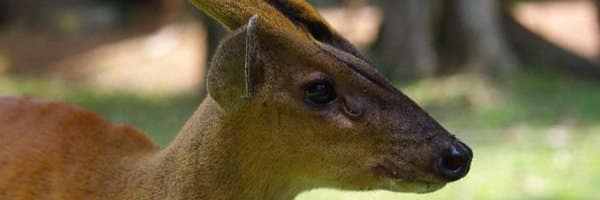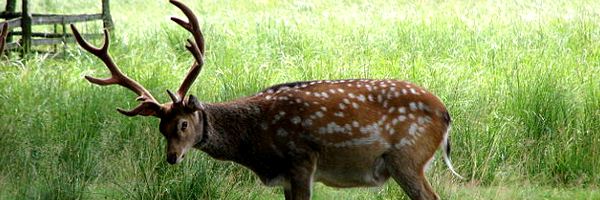Sambar Deer – Rusa unicolor
The Sambar Deer is often confused with the Elk due to the bulky body and long, thin legs. They also have very long antlers that can develop quite a few points on them. They can be more than 40 inches when you look at the full spread of them. Full grown males can be about 1,200 pounds with the females weighing in at about 220 pounds. They have a very dark brown coat with various markings along the sides of them.
Sambar Deer Distribution
The woodlands around Asia is where the Sambar Deer is located. They are often found in the higher elevations but they do need to stay within distance of water sources. The Himalayan Mountains are where the largest numbers of these deer are found. Their paths often cross with the Musk Deer in this area. New Zealand and Australia are also home to them but in much smaller numbers.
Many of the Sambar Deer have been relocated successfully into various National Parks. Some of them are even in areas of Florida today. This process is one that was done to help ensure a future for them. In captivity these animals can live 26 years of age. Relocation often occurs with the young though as it can prove to be too stressful for the adults.
Sambar Deer Behavior
The Sambar Deer form small herds of no more than six members. Generally it will be one male and several females. However, you will find all female herds as well as many bachelor herds of young males. They have amazing senses of both hearing and smell. When they feel that their herd is in danger they will give of a wild sound – one that is very similar to a car theft device going off.
Sambar Deer Feeding
Due to the very large size of it, the Sambar Deer will eat lots of food every single day. The diet consists of grass and different herds found around their environment. They are very opportunistic so they will make the most out of any food source they happen to come into contact with.
During certain periods of the year they will delight in being able to consume different types of fruits that grow as well. Berries and water plants seem to be part of their diet too.
Sambar Deer Reproduction
For the Sambar Deer mating can really occur any time of the year as long as their basic needs are being met. However, the majority of the time they will be involved in it from late September through early January. The males are very defensive of territory during this period of time. They will also make loud calling sounds to attract females.
The goal of the male is to develop a harem of about 8 females that he will be able to successfully mate with. Before he earns that right though he will have to prove he is stronger than other males wishing to do the same thing.
After success mating, the wait is about 9 months for the young to be born. It is very unusual for more than one to be born at a time. What is interesting is that their unique spots aren’t present at birth like for so many other deer species. Instead, they gradually start to appear as the animal matures. They will remain with their mothers for about two years before they go on their own.
They have an average life span in the wild of 20 years. In captivity though that can be up to 26 years. This is because they often are victims of various types of predators when they live in the wild. As they get older they are slower and that makes it easier for prey to take them down.
(Photo taken by Pratheepps)







